KENYA
Society

Society
Society
State structure
Since independence in 1963, Kenya has been officially a parliamentary democracy and a presidential republic with a very powerful president. All this is laid down in the 1963 constitution, which was substantially amended in 1982 and 1991. After the disappearance of the KADU, Kenya was in fact a one-party state from 1969 under the leadership of the KANU (Kenya African National Union). Moreover, according to President Moi, a multi-party system would only create ethnic tensions. And indeed there were plenty of them, only those riots were deliberately organized and politicians from different parties played a very dubious role. A multiparty system only became a reality again in 1990. For the current political situation see chapter history.
The parliament, the National Assembly, is the legislative power and consists of one chamber with 202 deputies. Of these, 188 are directly elected and 12 are appointed by the president. The chairman and the attorney general are ex-officio (ex officio) members. The term of office of parliament is five years.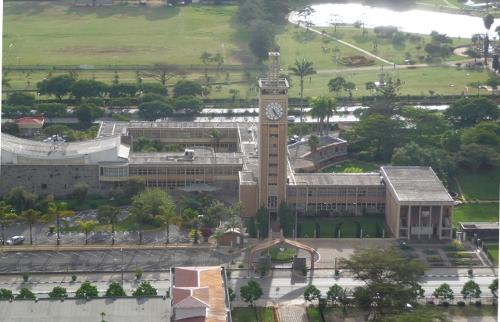 Building Kenyan ParliamentPhoto: Rotsee2 CC 3.0 Unported no changes made
Building Kenyan ParliamentPhoto: Rotsee2 CC 3.0 Unported no changes made
Representatives of the national government make up the most important part of the government in the districts. The middle management and the top of the civil service rotate and sometimes move to a new district within a few months. The government of a district consists of councils or district councils, which, however, do not have much more to say. Each district council has a number of appointed members and counselors per electoral area. The chairman is chosen from among their number, while the official secretary is often the most important person in a district.
Executive power rests with the president, who, in addition to being head of state, is also head of government and supreme commander of the armed forces. He can appoint and dismiss the vice-president and the highest court and has the power to postpone sessions of parliament. He is elected by the people for five years in direct elections. The President further appoints the Vice President and his cabinet members from the National Assembly. He also appoints the Chief Justice of the High Court. Line up voters in front of the polling station, KenyaPhoto: User:Stephenwanjau CC 3.0 Unported no changes made
Line up voters in front of the polling station, KenyaPhoto: User:Stephenwanjau CC 3.0 Unported no changes made
Administrative division
Kenya is administratively divided into seven provinces and a provincial district: Nairobi. The provinces are divided into 53 districts. Kenya is a member of the United Nations and a number of sub-organizations of the UN, the Commonwealth, the General Agreement on Tariffs and Trade (GATT), the African Development Bank, the Arab Development Bank, the Organization of African Unity (OAU), of which Kenya is one of was and is an associate member of the EU (Lomé Convention).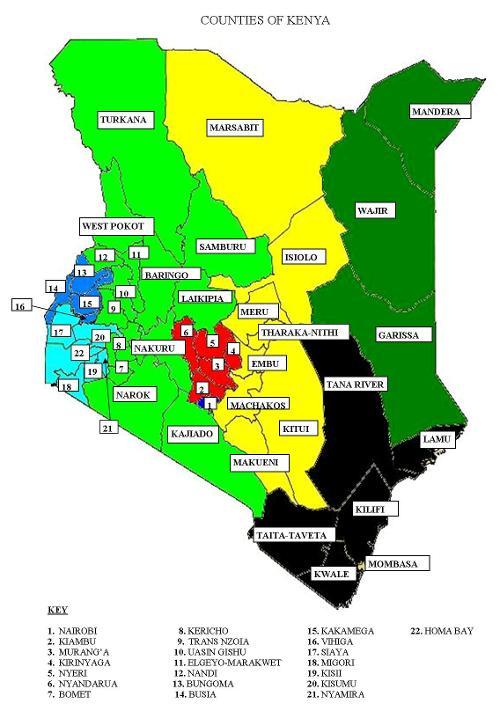 Districts KenyaPhoto: Kimemia Maina CC 3.0 Unported no changes made
Districts KenyaPhoto: Kimemia Maina CC 3.0 Unported no changes made
Education
Approx. 6 million children attend primary education in about 15,000 schools. There are about 2,500 secondary schools with about 650,000 students.
The current education system is still based on the system that was used in colonial times. British-style education was introduced in Kenya by missionaries and were of course aimed at e.g. European history and literature and certainly not African culture and history. In response, African schools were established especially in the Kikuyu area. There were also Asian schools.
At the moment there are schools with an A-level, formerly the African schools, where most children end up. These children also often end up in so-called Harambee schools, where an appeal is made to the population to maintain their own education (self-reliance). The fact that primary education is free is in fact only partly true. If the parents do not contribute to all kinds of provisions, then not much will come of education. The B-level schools are the former Asian schools where the somewhat wealthier children go to. The C-level schools are the former European schools where the elite children now attend. These are mainly private schools.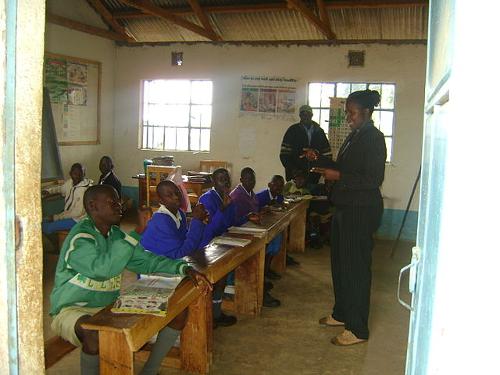 Special school for the deaf and hard of hearing in Kayeye, Kenya, attract deaf children from all over the regionPhoto: Moving Mountains Trust CC 2.0 Generic no changes made
Special school for the deaf and hard of hearing in Kayeye, Kenya, attract deaf children from all over the regionPhoto: Moving Mountains Trust CC 2.0 Generic no changes made
Education is compulsory from seven to fifteen years old and about 90% of children between six and twelve years old attend primary school more or less regularly. Only a third of eligible pupils go to secondary education. The low level of education of the teaching staff is also a major problem, as is the rapid population growth, which will double the number of students in the coming years. Many people in the classroom do not even have the required papers.
There are four universities in Kenya (together with approximately 35,000 students). The University of Nairobi (founded in 1956) and Kenyatta University (1972) are located in Nairobi. Egerton University, founded in 1939, is in Nakuru, and Moi University is in Eldoret, and was founded in 1984. About 10,000 Kenyans study abroad, several thousand in India alone. In addition, there are some higher technical vocational courses and a number of private universities.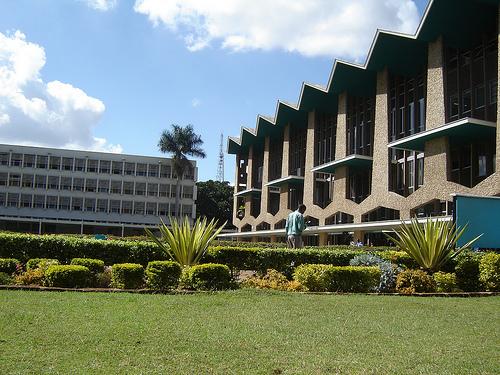 University of Nairobi, largest university of KenyaPhoto: Kenyaverification CC 4.0 International no changes made
University of Nairobi, largest university of KenyaPhoto: Kenyaverification CC 4.0 International no changes made
Great importance is attached to the education of adults. Nevertheless, there are estimates that 18% (1979: 32%) of men and 33% (1979: 56%) of women have never attended school. Approx. 40% of the population is illiterate. About 18% of government expenditure is spent on education.
Medical care
Healthcare in Kenya is good by African standards. Each district has at least one hospital (ca. 325) and in the countryside there are health centers (ca. 520), in which medical assistants and nurses are employed and there are so-called "flying doctors" who visit remote areas with their airplanes. In 1994 there were approximately 4,500 doctors and 630 dentists. Yet about 21% of the population is deprived of direct medical assistance. Government health care is virtually free. Most cities have modern private clinics and a large number of doctors are therefore concentrated in Nairobi.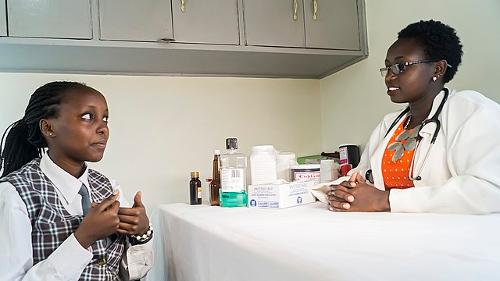 School nurse tals with pupil from schoolPhoto: Nduati.githae CC 4.0 International no changes made
School nurse tals with pupil from schoolPhoto: Nduati.githae CC 4.0 International no changes made
Missions play an important role in health care, while traditional healing methods are also important. Almost 6% of the government budget is spent on health care. The leading causes of death are diarrhea, pneumonia, TB, measles, malaria and malnutrition. Venereal diseases are common, as is AIDS.
Sources
Dietz, T. / Kenya : mensen, politiek, economie, cultuur
Koninklijk Instituut voor de Tropen / Novib
Finlay, H. / Kenya
Lonely Planet
Kenia
Het Spectrum,
Winslow, Z. / Kenya
Chelsea House Publishers
CIA - World Factbook
BBC - Country Profiles
Copyright: Team The World of Info